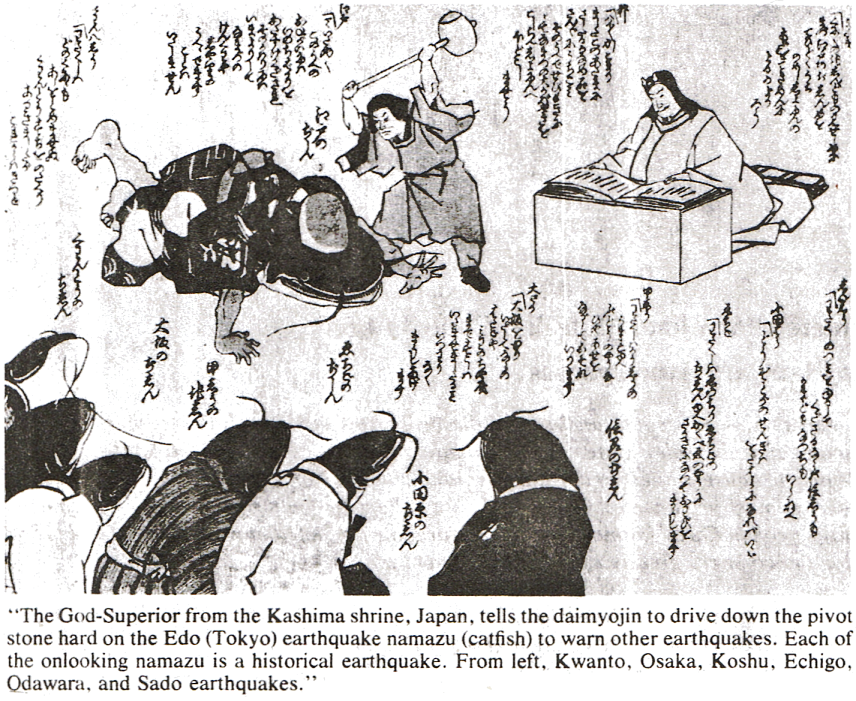
Ancient Mysteries no. 19, April 1981 (continuation of Journal of Geomancy)
{18}
While working with a Japanese business executive recently I returned to the study room we were sharing to find him sitting cross-legged on the floor in the corner. It turned out that he was practising a zazen technique that he’d learnt in Tokyo. We fell into discussion as to the value of the kind of meditation he was practising and ended up on the subject of Shinto shrines and Japanese geomancy. What he had to say about this I found fascinating and it indicated to me that comparisons with geomantic systems in other cultures throws light upon the meaning of the remnants of the geomantic system that’s been laid out here.
It seems that Japanese geomancy is alive on the ground and that the Japanese people are alive to its power. It’s not uncommon to find Shinto shrines right in the heart of modern Tokyo and sometimes bang in between two modern skyscrapers. The sites of ancient shrines are still respected by the modern Japanese. Not only are the old shrines still venerated but new Shinto shrines are built when circumstances arise to make this necessary. For example, it is not an uncommon thing to see a shrine on top of a modern building. What happens is this: when a new building is to be built, the Kan-nushi or “servant of god” is referred to who then advises if a shrine need be built. The Kan-nushi also advises as to which god the shrine should be dedicated; this particular part of the process can be paralleled with the dedication of Christian churches to different saints.
Now all this could be dismissed as being more to do with the sudden transformation of Japanese society from a near-medieval society in Victorian times to the modern technological society of to-day with the Shinto shrines being a superstitious hangover from that period. However the attempted destruction of a Shinto shrine at Haneda airport some ten years ago indicates that there is more to this than mere superstition. In about 1970 or maybe a year or two before, there was a move to enlargen Haneda airport car parking facilities. A Shinto shrine stood in the middle of the car park and the idea was to demolish the shrine so as to make more space for the cars. The shrine consisted of the traditional red Shinto shrine gate and a small building not much larger than an average-sized living room. The workmen arrived with a bulldozer for a quick clean job. For no apparent reason the bulldozer broke down. This was just the first in a whole series of breakdowns and delays in this apparently simple job. The minor problems turned to tragedy when first one workman died then two more.
It should be emphasized that this was not a dangerous job – the building was one-roomed, single-storeyed and small. Because of these deaths demolition was stopped and the shrine still stands today in the middle of the car park. The explanation that my Japanese colleague came up with was that the people who had built and located the shrine must have had knowledge of a science that is now lost to us.
......................................................................................................................................................
Editor’s note:
The connexion of holy sites with airports can be seen at London’s Heathrow, where there was a
Romano-British Pagan temple. A similar shrine, this time a sacred tree, existed at Singapore airport, where Feng-Shui is
still practised today.
......................................................................................................................................................
The cover of this issue shows the Japanese version of driving in the peg or ‘pivot stone’ at the
omphalos, in order to control the earth’s energies, in the Japanese instance symbolized as earthquakes in the form
of Catfish. Dragonologists will notice the “whiskers” of the catfish are very similar to the bewhiskered
dragons of both oriental and occidental lore.
